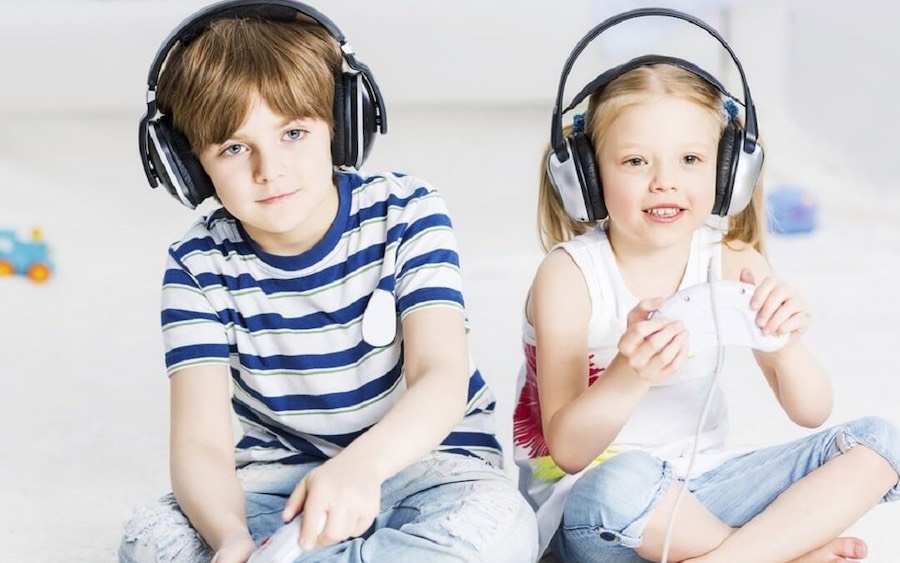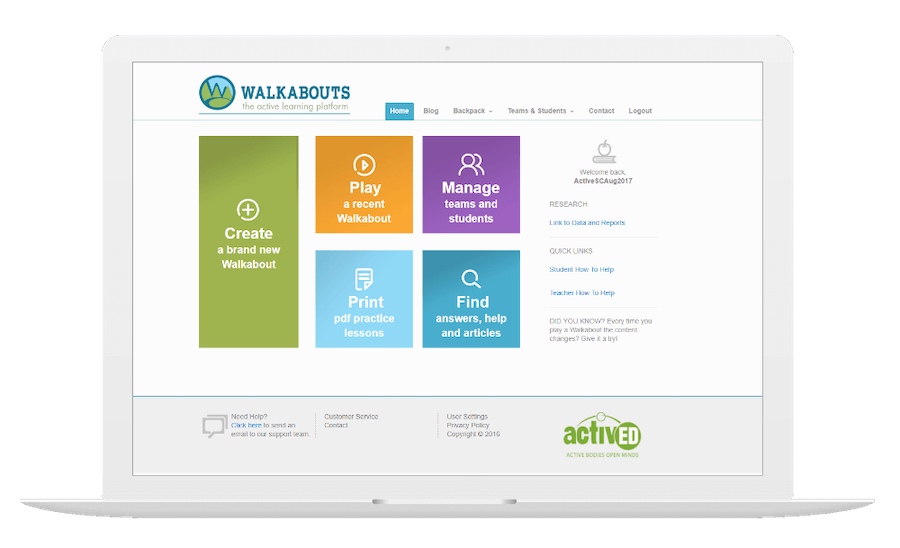
Creative Ways to Assess Students
At Walkabouts, we believe in educating the whole child, both mind and body. With Walkabouts, lessons consider academic learning, physical movement, and social and emotional growth.
Within school settings, the focus of students’ achievement is often standards based and academically driven. However, it is also important to pay attention to other skills students are learning by considering their growth in the following areas:
- Active listening
- Following directions
- Controlling their bodies
- Recognizing and regulating their emotions
- Empathizing with others
- Practicing a growth mindset
- Growing their gross motor skills
- Building self-confidence
- Being ready to learn
During the school year, spring can be assessment heavy with preparation for standardized testing and other benchmarks. While gathering academic data is necessary and important, students may feel overwhelmed and anxious if a large amount of class time is dedicated to test preparation.
Teachers need ways to track and monitor students’ progress around daily lesson plans. Therefore, it is vital that teachers find ways to record students’ understanding without giving students what feels like another formal assessment.
Flexible assessments allow students to show what they know in more creative and unstructured ways. By using a variety of assessment types, teachers can help prevent assessment burnout for students. With creative assessments, students may not even realize they are being assessed due to the way data is collected.
ASSESS WITH EXIT TICKETS
Exit tickets are a quick and easy way to assess students’ learning in an informal manner. Exit tickets give teachers insights into what stuck with students at the end of a lesson, and students have flexibility in showing teachers what they know. With an exit ticket, students share with the teacher quick responses about what they learned during a lesson. Students can record their notes on sticky notes, half-sheets of paper, dry erase boards, or school-approved digital applications and give them to their teacher. Teachers can then use this information to help guide lessons for the next day. Students’ exit tickets offer important information about what students know or do not understand so teachers can plan to review concepts as needed.
ASSESS WITH 3-2-1 BLAST OFF
With 3-2-1 Blast Off, teachers can use a rocket theme as a fun way to record what students take away from a lesson. If desired, create a printable worksheet of the rocket shown below. If desired, students can also easily create their own rockets on blank sheets of paper to practice drawing shapes — and to get creative.
For 3, students should write three key pieces of information they recall from the lesson in the three squares of the rocket. This information may include important topics, vocabulary, strategies, concepts, information, processes, etc.
For 2, students should write two things they have questions about or are wondering about after the lesson in the two exhaust clouds below the rocket. Teachers should answer these questions the next day, or use the questions to engage students in class discussion or think-pair-share activities. (Some students may already know the answers!)
For 1, students should write one thing they feel they need to practice or review in the triangle top of the rocket.
3-2-1 Blast Off is a creative assessment that allows teachers to gather information from students after a lesson. With this assessment, teachers can gauge students’ comprehension and summarizing skills, learn about areas they need to review or reteach, and gauge students’ interest in and exposure to topics.

ASSESS WITH PICTURE THIS
In Picture This, students will get creative and draw pictures to show what they know. If appropriate, students could also paint, make collages, build sculptures or models, etc. Within their pictures, students should label important elements. Finally, students should write a few sentences to explain their art, what they learned, and how the picture is tied to the lesson. If desired, allow students to present their pictures to the class to build students’ speaking and listening skills. A Picture This assessment supports artistic expression in creative students and provides a unique change of pace for the class.
ASSESS WITH WALKABOUTS AND WALKSHEETS
Walkabouts are an easy way to activate elementary lessons and engage students as they move while they learn. With standards-based Walkabouts, teachers start by selecting a grade, subject, and subcategory. Then, teachers choose a lesson, and click play. Walkabouts’ interactive lessons include physical, classroom-friendly movements and give students opportunities to practice their responses.
The web-based content incorporates movement to make learning interactive. Students move to show what they know, and teachers can easily determine what students understand by viewing their actions. Teachers can follow up with the accompanying Walksheets, a formative assessment of students’ progress that also includes a movement component.
These Walkabouts sample videos show how easy it is to add fun to early-grade fundamentals.
Walkabouts encourage active bodies and open minds. They are safe activities that students enjoy because they quickly learn it is OK to make mistakes. With Walkabouts, students will build classroom community as they move and learn together, encourage each other, and find joy in learning.
Walkabouts and Walksheets are engaging alternatives to standard assignments. Learn more with a free trial.





